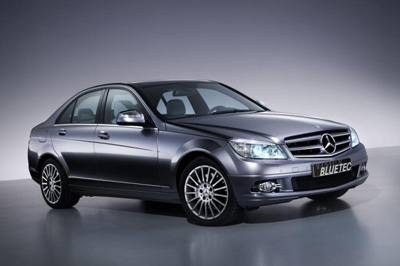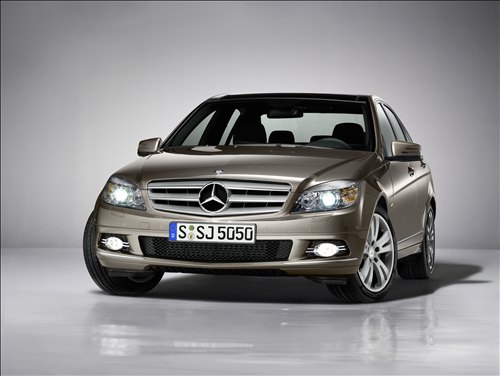Mercedes-Benz C-Class

Mercedes-Benz C-Class

Mercedes-Benz C-Class

Mercedes-Benz C-Class

Mercedes-Benz C-Class

C-Class was the only Mercedes model with a complete lineup of multi-valve engines. The new family of four cylinder petrol units, called M111, debuted in the C 180 (1.8 L, 122 PS (90 kW; 120 hp)), C 200 (2.0 L, 136 PS (100 kW; 134 hp) and C 220 (2.2 L, 150 PS (110 kW; 148 hp), the only four cylinder of the range sold in the U.S.). In 1996 the C 220 was replaced by the C 230, enlarged to 2.3 L displacement but with the same output, although with torque increased to 220 N·m (162 lb·ft). The C 280 was the high end model of the class, with a four-valve-per-cylinder straight-6 engine, capable of reaching 193 PS (142 kW; 190 hp).
Four-cylinder diesel models were equipped with the same OM601 engine of the 190, in the 2.0 L and 2.2 L versions. Many of these diesel variants were sold as taxis, due to their low fuel consumption and strong reliability. There were also more powerful OM605 five cylinder engines which were available in naturally aspired (C 250 D) and turbocharged (C 250 TD) forms. The turbodiesel was introduced in 1995 and is one of the novelties in the engine range available from this year. The most important was a supercharged version of the M111 straight four, the C 230 Kompressor, using a Roots-type supercharger to generate 193 PS (142 kW; 190 hp) at 5300 rpm: Mercedes-Benz reused supercharger technology after 50 years. Due to the tax law in Italy and Portugal, models in those countries featured a supercharged version of the smaller 2.0 L (C 200 Kompressor), which had a similar output of the C 230 Kompressor.
With the restyling in 1997, a lot of things changed under the hood of the Baby Benz. The most important innovation was the OM611, the first turbodiesel engine equipped with a common rail direct injection system (co-developed with Bosch). The new model was named C 220 CDI, and had an improvement in output of 30 PS (22 kW; 30 hp) compared with the C 220 Diesel, better fuel average and lower emissions. Another revolution occurred to the six cylinder engines, as the legendary straight six were replaced by an all new family of V6, the M112. The new engines featured SOHC heads instead of the previous DOHC, three valves per cylinder instead of four, and twin sparkplugs. The four-cylinder C 230 was replaced by the C 240 (2.4 L) and the I6 C 280 by the V6 C 280. These changes theoretically reduced emissions, and improved fuel consumption, without sacrificing power (the C 280 in (7,112 mm) fact had a slight 4 PS (3 kW; 4 hp) increase with the change).
In the last four years of production, the W202 received a few changes in the choices of engine. In 1998, a less powerful version of the 2.2 L turbodiesel was added, called C 200 CDI, which replaced the C 220 Diesel. In 2000, the C 200 Kompressor T's output was cut to 163 PS (120 kW; 161 hp), the C 240 T displacement was enlarged from 2.4 L to 2.6 L, but output remained at 170 PS (130 kW; 170 hp) and the C 180 got a 2.0 L engine.
No comments:
Post a Comment